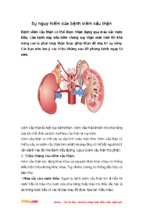Improving
patient flow
How two trusts focused on flow to improve the
quality of care and use available capacity effectively
Learning report
April 2013
Acknowledgements
South Warwickshire NHS Foundation Trust
–– Jayne Blackley, Deputy CEO, Director of Service Improvement
–– Glen Burley, CEO
–– Mel Duffy, Associate Director for Service Improvement
–– Jyothi Nippani, Consultant Obstetrician, Associate Medical Director for Emergency Care
Sheffield Teaching Hospitals NHS Trust
–– Peter Lawson, Clinical Director for Geriatric and Stroke Medicine
–– Tom Downes, Clinical Lead of Quality Improvement
–– Suzie Bailey, Service Improvement Director
–– Paul Harriman, Assistant Director , Service Improvement
–– Professor Mike Richmond (former Medical Director)
–– Professor Chris Welsh (former Director of Operations)
Thanks to all the teams at South Warwickshire NHS Foundation Trust and Sheffield Teaching Hospitals NHS Trust.
Thanks to Dr Kate Silvester, clinical systems improvement expert, and Jean Balfour, organisational development
consultant, who worked closely with teams at both organisations.
Thanks also to Sarah Garrett for preparing this learning report and associated case studies. The case studies are
available from www.health.org.uk/flowcostquality
© 2013 The Health Foundation. Originally published April 2013; minor updates made July 2013.
Improving patient flow is published by
the Health Foundation, 90 Long Acre,
London WC2E 9RA
Contents
Health Foundation commentary
4
1 Introduction
6
Box 1: The quality triangle
8
Box 2: The flaw of averages
10
2 The Flow Cost Quality improvement programme
13
Box 3: Methodologies underpinning the programme
14
Box 4: A3 – more than just a paper size
16
Box 5: The Oobeya (big room) process
18
3 Towards a service model designed to optimise flow
20
Box 6: South Warwickshire ‘front door’: diagnosis and solution design
23
Box 7: Sheffield ‘front door’: diagnosis and solution design
27
Box 8: South Warwickshire delays: diagnosis and solution design
30
Box 9: Sheffield ‘back door’: diagnosis and solution design
32
4 The impact of the changes so far
34
5 Key lessons from the Flow Cost Quality programme
40
Appendix: References and further reading
47
IMPROVING PATIENT FLOW
3
Health Foundation
commentary
Poor systems deliver poor results – for
patients, NHS staff and taxpayers. A common
assumption in the NHS has been that more
cost is required to improve patient flow and
healthcare quality. However it can be argued
that increases in cost have not always resulted
in proportionate improvements in access to or
quality of care.
The Health Foundation created the Flow Cost
Quality improvement programme to focus on
the relationship between patient flow, costs and
outcomes in two NHS hospital trusts: South
Warwickshire NHS Foundation Trust and
Sheffield Teaching Hospitals NHS Trust. The
programme helped the trusts to examine patient
flow through the emergency care pathway
and develop ways in which capacity could
be better matched with demand, preventing
queues and poor outcomes for patients.
Both trusts report early indications of
apparent reductions in mortality, maintained
performance during difficult financial
times and, in some instances, removal of
considerable capacity while improving quality
of care and reducing length of stay. The robust
analysis of patient flow conducted by the
trusts has given them greater confidence that
the results they are starting to see are based
on a sound foundation. It has also provided
them with the insight they need to quickly
understand where to intervene when they face
further performance challenges.
This report describes the experiences of the two
trusts, explains some of the key principles that
led them to ask questions about their services,
and provides some practical tools and stories
that describe how they went about making
changes. We hope that it will prompt other
organisations to ask themselves questions and
think about the benefits of working on flow.
4
THE HEALTH FOUNDATION
The two trusts that participated in Flow Cost
Quality are by no means unique in applying
the techniques described here. However, it
remains relatively rare in the NHS for these
techniques to be used systematically and
consistently across whole organisations or
populations, to the extent that they start to
change the core service model, culture and
approach of the organisation.
What characterises these trusts, and the
support provided by Dr Kate Silvester as part
of the programme, is the determination to
take some powerful principles and pursue
them to their logical conclusion. The key
concepts underpinning the programme, and
the work and analysis done by the teams,
prompt some profound questions and specific
challenges about the design of services.
–– Why do patients typically see the most
junior members of an emergency team
before they access senior decision
makers in emergency care?
–– In the debate about improving care out
of hours, are we doing enough to
understand demand and reduce delays
within working hours?
–– Are assessment units, as currently
organised, really providing rapid access
to senior decision making and ensuring
patients quickly get on the right pathway?
Or are they, in many instances, operating
as ‘holding bays’ in a bid to ease pressure
on emergency care, while potentially
adding confusion and delay at a point
which appears critical to the overall
outcome of a patient’s care?
–– Why do we stick to the historic pattern
of separating outpatient and emergency
care when, for some specialties, much of
what patients need is the same and it’s
hard to confidently identify those who
need care more urgently? Might there in
fact be efficiency as well as quality gains
in bringing together these flows for some
patient groups?
–– Why do we keep people in hospital for
their discharge assessment, when they are
medically fit and the assessment might be
more meaningful in their own home?
One of the key findings from the Flow Cost
Quality programme is that technical insights
into service design alone are not sufficient
to achieve sustainable change. If you hope to
realise the more radical benefits offered by
prioritising flow, how you approach change
and the organisational context in which
this happens is just as critical as finding the
right service design. This also prompts some
important challenges for organisations.
–– Do the measures used, both at board and
operational level, provide the information
needed to really understand what’s
happening to service performance and
the root causes of problems encountered?
Would shifting to measuring mortality by
date and time of admission rather than
discharge be a more sensitive and useful
indicator?
–– How far do departmental structures, job
roles, financial incentives and operational
policies support the core task of safely
getting patients through their pathway of
care? Or do the priorities of individual
functional departments inadvertently pull
organisations (and patients) in different
directions?
–– Do cost improvement programmes
overly rely on achieving economies of
scale, without really understanding the
impact on the ultimately more important
‘economies of flow’?
–– Does the use of multiple discrete projects,
typically used to achieve change, give
organisations the best chance of delivering
their complex improvement objectives?
None of these are easy questions to answer,
but this report demonstrates why these ideas
are important and have the potential to
deliver real benefits. For those who are already
absorbed in this agenda, we hope the report
offers inspiration to take your work further
and encourage you to also share what you
are learning.
Dr Jane Jones and Penny Pereira
Assistant Directors
The Health Foundation
–– In the quest to assure quality standards,
might regulators and providers require
checking processes that are actually
making it harder to reliably deliver high
quality care?
IMPROVING PATIENT FLOW
5
1
Introduction
This report describes the work undertaken
by two NHS trusts as part of the Health
Foundation’s Flow Cost Quality programme.
It illustrates the problems created by
poor flow that the programme was set
up to address, and provides practical
examples from the sites of how focusing
on flow can improve quality, use available
capacity effectively and save money. It
summarises the key lessons learned by the
sites and highlights important challenges
that focusing on flow raises for designing
services and approaching change.
Poor quality healthcare systems deliver poor
results – for patients, staff and taxpayers.
Much of the previously experienced growth
in NHS funding was predicated on the
assumption that more resource and capacity
was required to improve the quality of, and
access to, healthcare. However, many have
observed that these increases did not deliver
the proportionate improvements expected.
With the arrival of the £20 billion
‘productivity challenge’ and the Quality,
Innovation, Productivity, Prevention (QIPP)
agenda came new questions: Can access and
patient outcomes continue to improve with
less resource? If the timeliness and quality of
care is improved, what happens to cost?
To explore these questions, the Health
Foundation developed its Flow Cost Quality
improvement programme. The aim of the
programme was to explore the relationship
between patient flow, costs and outcomes
by examining flow through the emergency
care pathway, and developing ways in which
capacity can be better matched to demand.
6
THE HEALTH FOUNDATION
The programme ran in two NHS hospital
trusts: South Warwickshire NHS Foundation
Trust and Sheffield Teaching Hospitals NHS
Foundation Trust. South Warwickshire looked
at the emergency flow for all adult patients,
while Sheffield focused on one clinical
subspecialty – geriatric medicine.
Each trust brought its own context,
culture, challenges and opportunities to
the programme. Together, their work and
experience has provided rich learning about
the relationships between flow, cost and
quality, and about managing large-scale
change within a complex system. More details
about the work done in the sites can be found
at www.health.org.uk/flowcostquality
The Flow Cost Quality programme builds on,
and contributes to, a growing body of work
on improving flow. Early examples include
the work of hospitals in the UK and the USA
in the early 2000s as part of the ‘Pursuing
Perfection’ initiative, and the Institute for
Healthcare Improvement’s (IHI) IMPACT
network; the Esther Project in Jönköping,
Sweden; and the NHS Modernisation
Agency’s Emergency Services Collaborative,
Action On programmes and Improvement
Partnership for Hospitals. More recently, a
number of NHS trusts have been involved
in the Lean Enterprise Academy’s ‘Making
Hospitals Flow’ collaborative. Other
international examples include the work of
the Seattle Children’s Hospital and Group
Health in Seattle (USA), Intermountain
Healthcare in Wyoming (USA), and Flinders
Medical Centre in Adelaide (Australia).
Sources of information and results from these
initiatives can be found in the Appendix to
this report.
1.1 Why work on flow?
The term ‘flow’ describes the
progressive movement of people,
equipment and information through
a sequence of processes. In healthcare,
the term generally denotes the flow of
patients between staff, departments
and organisations along a pathway
of care.
Flow is not about the what of clinical care
decisions, but about the how, where, when
and who of care provision. How services are
accessed, when and where assessment and
treatment is available, and who it is provided
by, can have as significant an impact on the
quality of care as the actual clinical care
received.
The concept of using flow to improve care has
received increasing traction within healthcare,
especially in relation to reductions in patient
waiting times for emergency and elective care.
Awareness has been growing of the ideas, first
tested in other industries, and results that
organisations have generated by applying flow
thinking to their organisations.
As the national policy agenda focuses more
strongly on integration between primary care,
acute services and social care, the need to
understand and improve how patients flow
through systems is more important than ever.
High profile cases of failures in the timeliness
and quality of care serve as warnings as to the
painful consequences of poor quality systems
and processes.
and reduce cost. Most of the concepts and
specific changes described in this report have
already been tried somewhere in the NHS.
What these trusts – and this report – seek to
do is understand what is possible when flow
concepts are applied systematically across
whole organisations and populations.
As well as piecing together specific process
changes to start to have an impact on overall
organisation performance measures, this
work raises questions about the way in which
we structure leadership and delivery of
services. While improving quality, increasing
efficiency and flow – and reducing costs –
have traditionally been the responsibility of
different functions (and executives) within
healthcare organisations, it is increasingly
understood that they are inextricably linked.
Improving systems of care is a shared agenda
– the full benefit is only realised if an end-toend patient pathway approach is taken across
departments.
While the trust teams aren’t the first to
acknowledge problems with flow in their
organisations, they have joined a relatively
small number of trusts who have made this a
sustained focus and effort and are starting to
report impressive results.
‘It’s about looking at it from the
patient’s perspective – how do we
remove the barriers and for the patient
make it seem integrated? Because that’s
where the quality and efficiency gains
lie.’ (Tom Downes, Clinical Director
for Quality Improvement, Sheffield)
In a pressurised financial environment,
faced with ever greater challenges to meeting
quality objectives, there is understandably
an appetite for approaches that have been
shown simultaneously to improve quality
IMPROVING PATIENT FLOW
7
Box 1: The quality triangle
The model below – the ‘quality triangle’ – helps to illustrate the relationship between patient flow, quality and
cost in a system of care.
The process, or journey, that a patient experiences is depicted at the bottom of the triangle. Each yellow box
represents a task. A patient journey may involve hundreds of clinical and administrative tasks and the same
tasks can happen at different times and in different places.
The number of tasks in a process affects the quality of care. If we assume that every task in a 100-step process
is performing to the quality standard accepted in clinical trials – ie a 95% probability of it being done correctly
– this means that fewer than 6 in 1,000 patients going through that process will receive ‘perfect’ care (the right
care, first time, on time, every time, in full).
The grey base of the quality triangle reflects the usual working environment, in which many errors are detected
but lead to poor quality service and/or delays. Patients, relatives and staff become so used to this level of quality
that it becomes accepted as normal. However, many of these constantly occurring errors are not spotted and
corrected (represented by the yellow part of the triangle). These errors can combine to cause a problem which
impacts on patient care, such as medication errors, delays or repeated investigations. The same errors can also
result in serious harm (orange) and, more rarely, in an unexpected death (the red tip of the triangle). However,
there is no way of predicting how and when errors will combine to cause harm.
Improving the quality of each task by 1% and removing 10% of tasks in a 100-step patient journey would result
in 25 out of 1,000 patients receiving perfect care. This represents a five-fold increase in quality, or a five-fold
decrease in risk at the base of the triangle. Ultimately this will impact the small number of serious incidents and
unexpected deaths at the top of the triangle.
8
THE HEALTH FOUNDATION
1.2 Key concepts for
improving flow
The relationship between
flow, quality and cost
Quality problems are often treated as if they
are one-off events, rather than the inevitable
consequence of random combinations of
constantly occurring errors and delays in
multi-task processes. A typical response
therefore is to add more ‘checking’ tasks to
spot and correct errors. However, as illustrated
in Box 1, adding tasks or steps to the existing
patient journey can actually make the inherent
quality of the process worse – increasing the
total number of tasks, each of which has the
potential for errors – and can waste precious
time and resource.
Instead of adding ‘assurance’ checks, the most
reliable and sustainable way to improve both
quality and cost is to systematically redesign
processes of care. The basis for process
improvement involves:
–– improving the quality (value) of each task
or step
–– removing any unnecessary tasks (waste)
from the process.
Improving the quality of a system also reduces
costs. If quality is improved by removing
wasteful tasks from a process, the cost of
staff time performing the tasks and caring
for patients while they wait for them to be
performed is reduced.
As well as the human costs involved for
patients, family and staff, errors and patient
harm have a financial impact (through,
for example, increased length of stay, readmissions, additional investigations and
procedures). If the error rate and harm within a
care system can be reduced, the costs can too.
While there is a logical productivity case for
improving quality, the relationship between
quality and cost is not linear, often making
it difficult to see or realise the full potential
contribution of these approaches to overall
financial objectives. ‘Wasted’ or non-value
adding staff time that is removed from a
process can only be released incrementally
(usually in Whole Time Equivalents).
Similarly, capital costs, such as beds, can
often only be released as ‘units’, such as
whole wards. Organisations therefore tend
to find that financial benefits lag behind the
implementation of quality improvement
work and are sometimes not realised, as the
additional step of taking out capacity is often
itself far from straightforward.
Variations between
demand and capacity
Even if a process is designed so that it only
involves tasks that are valuable and necessary,
flow will also be affected by variations in
demand and capacity.
Most delays and inefficiencies in the
healthcare system are not the result of excess
demand or the shortage of resources. Instead,
the key issue is a mismatch between when
capacity is available and when demand
presents to a service.
IMPROVING PATIENT FLOW
9
Box 2: The flaw of averages
If service capacity is planned to meet the average demand, patients will have to wait (queue) when demand is
higher than average. But when the demand is lower than average, the unfilled capacity cannot be carried forward
to the future and is effectively lost.
Chart 1: In this example clinic, an average of 10 hours of work per week is required to meet the patient demand
(number of people and severity of their conditions). An average of 10 hours of capacity (staff time, equipment
and clinic space) is provided to meet the demand. Note the mismatch between patterns of variation in demand
and in capacity.
Chart 2: This illustrates the queues that form due to this variation mismatch, which is caused by planning clinic
capacity to meet average demand.
Chart 3: As a consequence of ‘lost’ capacity when demand is lower than average, the throughput of the process
(ie clinic activity) is equivalent to only 9.5 hours of work per week when the top chart illustrates that the average
capacity is 10 hours per week. If only data on activity and waiting times are taken into account, the problem will
be misdiagnosed as an overall shortage of capacity.
10
THE HEALTH FOUNDATION
Services tend to be planned on the basis
that, if average capacity is sufficient to meet
average demand, there will be the right level of
resources to provide care without delay. Box 2
illustrates why this doesn’t work in practice.
They might react to the pressures they face
by adding check processes and diverting
patients to emergency care so that they are
seen quicker, using up further capacity and
making services more chaotic.
Patients present to the healthcare system,
generally very predictably, mostly between
9am and 8pm, seven days a week, 365 days
a year. However, the number and skill level
of staff needed to meet this demand is only
available within ‘normal working hours’.
There is typically reduced capacity at night,
weekends and on public holidays.
–– When organisations put in place extra
short-term bursts of activity to deal with
queues (for example with waiting list
initiatives or extra activity to respond to
winter pressures) this can send surges
of work to the next step in the process,
increasing the impact and problems
associated with the amplification effect.
The mismatch between capacity and demand
is a significant problem in healthcare for a
number of reasons.
Managing variation
–– There is typically a mismatch at every step
in pathways that often have many stages.
This mismatch creates an amplification
effect (also known as the Forrester effect)
which means that problems with
variation get worse as patients travel
down a multi-stage pathway.
–– Queues caused by this mismatch have
consequences. Seriously ill patients have
to be ‘prioritised’ within a queue and
resources have to be reserved for these
urgent cases. This limits the remaining
capacity available for less seriously ill
patients, who are consequently delayed
for longer.
–– Staff working amid a constant backlog
can feel ‘overwhelmed by demand’
(or at least the fear that they may be
overwhelmed again at any time). The
pressure associated with this constant
backlog is understandably associated with
errors. Staff trying to meet patient needs
in this context may also act in ways that
inadvertently make the problem worse.
If the section above describes why variation
and the mismatch between capacity and
demand accumulates to be such a problem for
healthcare services, it also serves to illustrate
the potential for reducing delays, wasted
resources and clinical risk if the root causes of
variation can be better understood. Much can
be achieved but it needs the right approach.
In a resource-constrained environment,
responsible managers and clinicians work
to make services as efficient as possible.
However, ‘efficiency’ is commonly
misinterpreted as 100% utilisation of all
resources – human and equipment. The
‘flaw of averages’ shows that if planning
is based on average demand, staff may be
fully utilised, but will no longer be fully
productive. Valuable time is wasted triaging,
prioritising and ‘managing’ waiting patients,
rather than adding value by diagnosing
and treating them. Some of the costs of this
‘unseen’ waiting have become embedded
in hospital structures: physical resources
such as waiting rooms, assessment units and
discharge lounges.
IMPROVING PATIENT FLOW
11
If variations in demand are taken into account
in capacity plans, this ensures that there is
surplus capacity or ‘slack’ in the system to
adjust for hourly, daily and seasonal changes
in demand. This surplus can be misinterpreted
as waste. However, a small investment
in ‘slack’ prevents amplification and the
distortions in demand that require far larger
investments in capacity further downstream.
Slack also allows for changes in staff capacity
due to sickness, training and holidays. It gives
staff time to monitor and improve services,
and to manage any sustained changes to
average demand until long-term capacity can
be planned to meet it.
12
THE HEALTH FOUNDATION
Rather than maximising the utilisation of
individual units in organisations, the focus
needs to be on optimising the flow of patients
through the system. Flow can be improved
by reducing the variation in capacity and
ensuring that the capacity, at points where
there is a constraint in the process, meets the
variations in demand.
2
The Flow Cost Quality
improvement programme
The Heath Foundation worked with the two
NHS hospital trusts during the Flow Cost
Quality programme to support them to:
–– understand the emergency care pathway
and how it relates to the wider healthcare
system
–– understand the pattern of demand on
their services from all sources (emergency,
planned, outpatient and follow-up care)
–– develop capacity plans to meet the
variations in demand and prevent queues
–– test the impact of changes to capacity by
reducing the capacity variations, improving
productivity and reallocating resources.
Kate Silvester, a dedicated clinical systems
improvement expert, supported the teams in
both organisations. Kate originally trained and
practised as an ophthalmic surgeon, before
retraining as a manufacturing engineer. She
has expertise in the design and management
of organisational systems to deal with
variability in demand and capacity.
‘On rejoining the health service
I learned that all those tools and
techniques that I’d been taught
absolutely work in healthcare. And
they are very similar to the way
of thinking that we have... [when]
learning about a very complex human
system.’ (Kate Silvester)
2.1 The improvement
approach
The results achieved by South Warwickshire
and Sheffield are not just a result of what they
did and the different service models they
designed given their new theoretical insights
into variation; success relied just as much
on how they approached improvement. In
a complex organisation involving hundreds
of people, a systematic approach capable
of securing and sustaining engagement of
multiple diverse perspectives is essential for
changes to work.
Underpinned by the principles of lean, the
theory of constraints and clinical systems
improvement, the programme developed an
overall improvement approach. This began to
be used at every level of the system, including
board, clinicians and support services.
The improvement approach fell into three key
phases, which reflected the Plan, Do, Study,
Adjust (PDSA) cycle of lean.
–– Understanding the system (Study and
Adjust thinking).
–– Testing different solutions and
implementing new processes (Planning
and Doing).
–– Measuring for improvement (Study and
Adjust thinking again).
The Flow Cost Quality programme employed
principles and tools drawn from the growing
body of practical knowledge on ‘clinical
systems improvement’. It also drew on concepts
and principles from two key methodologies
from manufacturing – ‘lean’ and the ‘theory
of constraints’ – which have been adapted for
service industries, including healthcare. See
Box 3 for details.
IMPROVING PATIENT FLOW
13
Box 3: Methodologies underpinning the programme
Clinical systems improvement
The discipline of clinical systems improvement focuses on processes within organisations, viewed from a patient
perspective. It emphasises engagement of all stakeholders in understanding and improving an end-to-end
process, and uses time-series data to diagnose and measure the impact of improvements. Changes are tested
using Deming’s quality improvement cycle of Plan, Do, Study (or Check) and Adjust (PDSA). This was the key
improvement approach taken by the Flow Cost Quality programme.
Lean
Lean methodology – the basis of the world famous Toyota production model – aims to provide what the
customer wants, quickly, efficiently and with as little ‘waste’ as possible. Its application to healthcare lies in
streamlining and improving the quality of processes by minimising or eliminating waste (including unnecessary
delays, re-work, inappropriate procedures and errors) and maximising what adds value to patients.
Theory of constraints
The theory of constraints came from a simple concept similar to the idea that a chain is only as strong as its
weakest link. It recognises that movement along a process, or chain of tasks, will only flow at the rate of the task
that has the least capacity. The approach involves two key principles.
–– Identifying the constraint (or bottleneck) in the process and getting the most out of that constraint. Since this
rate-limiting step determines the system’s throughput, the entire value of the system is represented by what
flows through this bottleneck.
–– Recognising the impact of mismatches between the variations in demand and variations in capacity at the
process constraint.
Further reading can be found in the Appendix to this report.
Understanding the system
Process mapping pathways of care was essential
to enabling the teams to understand their
individual systems in detail. It drew together
the perspectives of a range of stakeholders,
including patients, and helped to clearly set out
what was actually happening, rather than what
people thought was happening. It also allowed
the teams to identify where in the system the
real constraints lay and to understand that
these were not always where the ‘symptoms’ –
the obvious problems – were occurring.
Testing different solutions and
implementing new processes
The teams tried small tests of change using
PDSA cycles to trial the ideas they identified
as potential solutions for key problems within
14
THE HEALTH FOUNDATION
the system. These, supported by rigorous
measurement, were a core component of the
improvement approach. Data were regularly
gathered and plotted in time series on run
charts for every test of change. Only when
the teams were happy that the change had
significantly improved their process was the
new process implemented.
Measuring impact
Since understanding variation in the system
was a key principle underpinning the
work, the teams needed to interrogate their
data to understand the patterns of process
variation over time. They also needed to be
able to distinguish when the pattern had
changed significantly (statistically) and
whether significant changes were expected
or unexpected.
To understand the variation of processes over
time they embedded the discipline of statistical
process control (SPC). Developed within
manufacturing, SPC is becoming increasingly
used in healthcare environments. It has gained
traction in part because clinicians are familiar
with recognising patterns of variation in the
charts at the end of every patient’s bed. Several
measures of the performance of the patient’s
‘system’ are plotted over time (eg temperature,
pulse, blood pressure, respiration and fluid
balance) and the relationship between them
is monitored. This is an essential part of
making a diagnosis and monitoring the impact
of treatment.
Identifying high-level measures, and regularly
reviewing them, was crucial for the teams to
understand their system’s performance and
whether (and how) any of the changes they
implemented actually made a difference at
the system (hospital) level. From the frontline
teams to the board, this required an
important shift in how key information was
presented, moving away from comparative
data to time-series data that demonstrate
performance over time.
‘We’re looking, very specifically, at the
relationship between the emergency
flow (from the point at which the
patient declares themselves ill to the
point at which they are well again),
the death rate and the cost, and we’re
tracking those three things as if they
were the pulse, the blood pressure and
the temperature on the patient’s chart
at the end of their bed.’ (Kate Silvester)
2.2 Implementing
the approach
The teams used two key tools to help them
implement the approach: the A3 process and
the Oobeya (big room) process (see Boxes 4
and 5).
Unsurprisingly, the different contexts and
organisational cultures of South Warwickshire
and Sheffield led to the two sites taking
different approaches to how they managed
their work.
Initially starting with the A3 process
introduced by the programme, the core
team at South Warwickshire decided to
put a programme management structure
around it as the project grew. This included a
programme board, with executive and wider
stakeholder membership, and a number of
project streams focusing on different elements
of the work as the programme progressed.
The teams in each project stream used the
A3 process to structure their work. The
size and organisational culture of South
Warwickshire facilitated strong executive
involvement, with clear and active leadership
support from the chief executive.
In Sheffield, a much larger trust, the
leadership and drive for change came mainly
from within the improvement team and from
clinical leaders involved in the project. The
team took a more emergent approach to the
work and were highly successful in adapting
a method – the Oobeya process – for multistakeholder participation, including GPs and
wider stakeholders.
IMPROVING PATIENT FLOW
15
Box 4: A3 – more than just a paper size
Both organisations used the A3 problem solving process as a key methodology for their system analysis and tests
of change.
What is it?
The A3 problem solving process is a systematic, iterative and participatory approach to analysing a problem and
developing solutions. It is based on discussion and collaboration among a group of stakeholders and encourages
them to work together to ‘see’ and understand a problem, and track changes made to solve it. The A3 is a
process, not a plan, and can’t be written by one person. The A3 name comes from the paper size used to capture
all the information concisely – and with visual clarity – on a single sheet.
The process has its foundations in Deming’s original PDSA cycle for quality improvement. It starts at ‘Study’
and focuses on really understanding the problem before jumping into ideas for solutions, and has a strong
emphasis on facts, data and measurement. It evolved from Toyota’s world-famous approach to improving its
manufacturing process.
How to use it
As a working document, the A3 record is handwritten in pencil to enable the continual updating required at
each iteration. There are many different versions, but most are based on the common features shown in the
format below.
16
THE HEALTH FOUNDATION
Steps in the A3 process
–– Capture the issue or problem, how it came to light and its impact on patients and staff (boxes 1 and 2). This
will help define the measures for improvement (box 9).
–– Identify key stakeholders (box 3) – the people who carry out or who are impacted by the process – and bring
together a team to map and understand the current process (box 4) and analyse data (box 5) to identify the
root cause(s) of the problem. When working on flow, this analysis needs to include:
• identifying the activities that do not add value to the patient or customer (waste)
• measuring the demand for the process and the capacity of each task in order to reveal the constraint (or
bottleneck) in the process.
–– Agree what the future state should look like (box 6). This includes:
• how the process will work once the wasted activities have been eliminated
• how the capacity of the rate-limiting task in the process can be adjusted to meet the demand, or how
‘wasted’ resources can be redirected to relieve the bottleneck.
–– Discuss and agree the changes needed (sometimes called ‘countermeasures’) to eliminate the waste from the
process and maximise value to the patient (box 7).
–– Document the changes planned (what, by who, when?) (box 8). Test them rapidly and on a small scale, and
review and adjust as needed, before implementing them in full.
–– Keep track of how the changes impact your measures for improvement (box 9).
Once the issue has been solved, ie the required improvement has been achieved and sustained, the A3 team can
be disbanded. The final version of the A3 document forms the record of the new process or standardised work.
Key lessons from the Flow Cost Quality programme on using the A3 process
–– The A3 problem solving process is more than an iterative technical tool for understanding the root cause
of a problem and testing solutions; used properly it can be a powerful method for changing the beliefs and
behaviours of those involved.
–– The process builds certainty and momentum for the changes required. It brings together the stakeholders
affected by the problem, who are often separated by geography or organisational silos. Together they can
build a shared understanding of the problem and generate solutions to its root cause.
–– Stakeholders need encouragement to spend more time in meetings based around the A3 problem-solving
process. The result is a shorter timeframe required to solve the problem and eliminate waste. The initial costs
of such meetings are far outweighed by the costs of poor problem solving (workarounds) and firefighting
persistent problems.
The A3 process can be used effectively within a more traditional programme and project management
framework (South Warwickshire), and as a key visual tool within the Oobeya approach (see Box 5 overleaf).
IMPROVING PATIENT FLOW
17
Box 5: The Oobeya (big room) process
What is it?
The Oobeya (Japanese for ‘big room’) process is a regular standardised meeting of the project team through
the lifetime of the project. It takes place within a dedicated project room in which all the project information is
displayed. Participants use the visual information to monitor data and progress, discuss issues, share experiences
and agree next steps in the project.
The Oobeya process offers an environment for real-time decision making that engages all relevant stakeholders.
It can be used to help identify improvements to individual healthcare processes, with reference to their wider
system impact, and then implement them successfully.
It was developed by Toyota and is used by other manufacturing companies (including NASA, Boeing and
Unipart) for managing new product development in highly complex, worldwide supply chains.
How to use it
The Oobeya process can be tailored to suit the project and pace of change required. It was used by Sheffield as a
weekly, one-hour standing meeting with a standard agenda; all relevant information was updated on wall charts
in a dedicated project room. The key elements of the approach are as follows.
1. Begin with a patient story
A stakeholder describes a patient’s experience (often from the previous week’s test of change) in order to remind
all stakeholders of what they need to achieve.
2. Study the last test of change
Review updated measurement (time series) charts to see impact of the changes. Discuss what was learned from
the test, including:
–– nuggets: what went well and needs keeping
–– niggles: what didn’t go so well and needs changing
–– nice-ifs: what needs to be included in the next test of change
–– no-nos: things that could happen, didn’t happen and must not happen as a result of changes (eg re-admission
on the same day as a consequence of a failed discharge).
3. Plan the next test of change
Use the Study phase of the previous PDSA cycle to plan the next test of change. Discuss and capture issues
(niggles) and identify those that can be resolved. Use a visual system (eg sticky notes) to support the
management of the test process.
4. Briefly discuss any other pertinent issues
Include feedback from other relevant meetings attended by stakeholders.
Between meetings, anyone familiar with the big room can visit or guide other stakeholders through the overall
process and the status of tests of change at any time. One of the major benefits of this approach is that all the
relevant information is visible, easy to understand and available to all.
18
THE HEALTH FOUNDATION
The Sheffield team had used the A3 process to good effect, but found that the number of separate test (PDSA)
cycles they were undertaking was leading to problems with the overall management of the change process. The
team needed something which would bring together a broader group of stakeholders to understand and address
delays to patient flow and sources of error in the wider health and social care system. They therefore adapted the
Oobeya process.
Key lessons from the Flow Cost Quality programme on using the Oobeya process
Benefits of the approach include:
–– A standard process that allows staff, including senior managers, to see and understand the complexity of the
whole system, their ‘place’ within it and their impact on it.
–– Frequent meetings with timely decisions made in response to real-time data.
–– Encouraging frequent tests of change to the processes of care, and reducing intervals between successful tests
(which impacts the cost of change).
–– Dialogue between stakeholders from across the system.
–– Managers recognising the impact of other parallel initiatives.
–– Reducing the cost and improving the value of meetings.
‘The big room provides a space where the team can come on a weekly basis and take part in the
discussion in real time. It’s equal. Everyone has a say, there isn’t a hierarchy when you walk through
the door of that big room.’ (Suzie Bailey, Service Improvement Director)
‘At times it’s uncomfortable. With some of the tests we fail, with others we succeed, but we learn from
both.’ (Tom Downes)
‘It’s quick, everybody’s opinions are valued and at each meeting I feel that we move ahead with the
plans.’ (Helen Miller, Clinical Specialist Occupational Therapist)
IMPROVING PATIENT FLOW
19
3
Towards a service model
designed to optimise flow
This section describes the insights the two
trusts gained into specific parts of their
system, the changes they made and the impact
these are having. The impact on quality and
cost builds on the combination of these
changes and is summarised in chapter 4.
–– speed up patient flow by:
The trusts between them made changes across
the patient pathway. These included changes to:
This report provides a selection of the work
done and the changes made by each trust.
More detail about the work done by the sites is
available at www.health.org.uk/flowcostquality
–– meet demand in real time at the front
door and improve care through a single
multidisciplinary assessment process
(Boxes 6 and 7)
Figure 1: A visual representation of the patient pathway
20
THE HEALTH FOUNDATION
• improving the turnaround time of core
processes (Box 8)
• improving the flow into post-discharge
care (Box 9).
- Xem thêm -




















